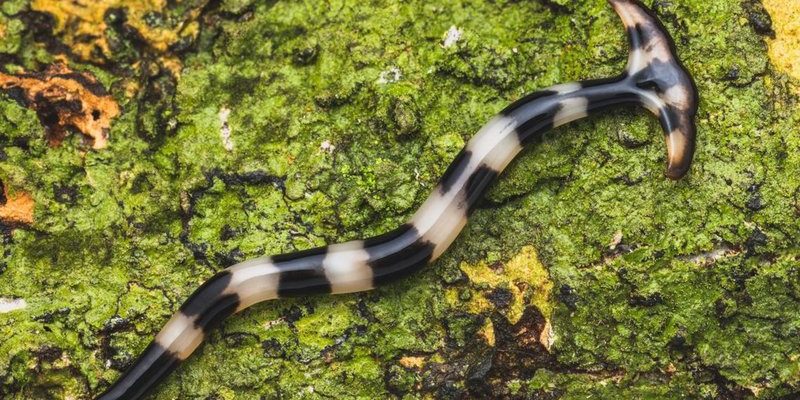
Hammerhead worms, scientifically known as *Bipalium*, are a type of planarian. They hail from tropical regions but have made their way into various parts of the world, including many gardens. While they may look daunting, their behavior and impact on your garden can vary. So, let’s dive into how to identify these fascinating creatures and what they could mean for your beloved plants.
What Are Hammerhead Worms?
Hammerhead worms are intriguing members of the flatworm family. They typically range in color from brown to grayish with darker stripes or patterns running along their bodies. What really sets them apart is their distinct head shape. Imagine a finger that’s been squished a bit—flat and wide—that’s what you’re looking for. Their bodies can grow quite long, often reaching lengths of up to 12 inches.
These worms are usually found in moist environments. You may encounter them during a rainy day or in particularly damp areas of your garden. They can be a bit like that unexpected guest who shows up unannounced. And just like with any guest, you might be left wondering: Should I be worried?
Physical Characteristics
Identifying hammerhead worms doesn’t require a PhD in biology. Here are a few simple traits to keep an eye on:
- Length: Typically around 4 to 12 inches long.
- Color: Usually brown or grey, with lighter and darker stripes.
- Head Shape: Characteristically hammer-shaped, wide, and flat.
- Movement: They move in a gliding manner, usually in a wave-like motion.
If you observe these features, you can confidently say you’ve spotted a hammerhead worm in your garden. But just because they look unique doesn’t necessarily mean they’re trouble.
Are Hammerhead Worms Harmful?
You might be asking yourself, “What do these worms mean for my garden?” Honestly, they can be a bit of a mixed bag. While hammerhead worms are not dangerous to humans, they can pose a threat to your garden ecosystem.
These worms primarily feed on other soft-bodied invertebrates, like earthworms. Yes, those friendly, soil-enriching earthworms could be on their menu! This means if you have a healthy population of earthworms, a few hammerhead worms could disrupt that balance. But don’t panic just yet!
Impacts on Garden Health
Here’s what you should know about the effects hammerhead worms can have on your garden:
– **Soil Quality:** Since they prey on earthworms, their presence can lead to a decrease in soil quality over time. Less earthworm activity can mean less aeration and nutrient mixing in your soil.
– **Plant Growth:** If your plants rely on the nutrients and structure provided by earthworms, you might notice a decline in their health. Gardeners often overlook the connection between soil health and plant vitality.
– **Natural Pest Control:** On the flip side, hammerhead worms can help control certain pests in your garden, acting as part of a larger ecological balance.
So, while they can be detrimental in some circumstances, they might not be a cause for alarm depending on the size of their population.
How to Identify Hammerhead Worms in Your Garden
If you suspect hammerhead worms are wreaking havoc in your garden, you’ll want to confirm their identity. Here are some straightforward steps to help you identify them effectively:
1. **Visual Inspection:** Look for the characteristic hammer-shaped head. If you spot a long, slim, flat worm with this unique shape, it’s likely a hammerhead worm.
2. **Behavioral Observation:** Watch how they move. These worms glide rather than slither, giving them a somewhat graceful appearance. If you see one moving in a wave-like pattern, congratulations—you’ve got a hammerhead!
3. **Location, Location, Location:** Check damp areas of your garden, as they thrive in moisture. Under mulch, rocks, or even in your compost bin are common spots to find them.
4. **Differentiate with Similar Species:** Be aware that some other worms may have similar shapes. If the worm you find isn’t all flat and has a defined head, it might not be a hammerhead after all.
Getting to know these worms doesn’t just help in proper identification; it also allows you to make informed decisions about your garden’s management.
What to Do If You Find Hammerhead Worms
If you’ve confirmed the presence of hammerhead worms in your garden, you might be wondering how to go about dealing with them. Here’s the thing: the approach you take can depend on your garden’s specific needs.
1. **Leave Them Be:** If their population is small and your garden seems healthy, it might be best to just watch and wait. The ecosystem can often self-correct.
2. **Remove Manually:** If they are causing noticeable damage or are in large numbers, consider manually removing them. Wear gloves, and simply pick them up and relocate them to a less harmful area.
3. **Natural Predators:** Encourage the presence of natural predators like birds or certain beetles that may feast on the hammerhead worms. This can help maintain balance.
4. **Improve Soil Health:** Enhance your soil with organic matter and compost. A thriving ecosystem can often withstand small disturbances.
Taking these steps not only helps protect your garden but also gives you a hands-on approach to managing its health.
Identifying hammerhead worms in your garden is just one part of the journey toward understanding your garden’s ecosystem. While these unique worm-like creatures can stir up some worry, they play a role in the delicate balance of nature. Observing and appreciating this balance is key to being a successful gardener.
So, next time you come across a hammerhead worm while digging in the soil, pause for a moment. Reflect on their presence and what it means for your garden. With a little bit of knowledge and a gentle hand, you can make decisions that not only protect your plants but also celebrate the rich tapestry of life that thrives beneath the surface. Your garden will thank you for it!

